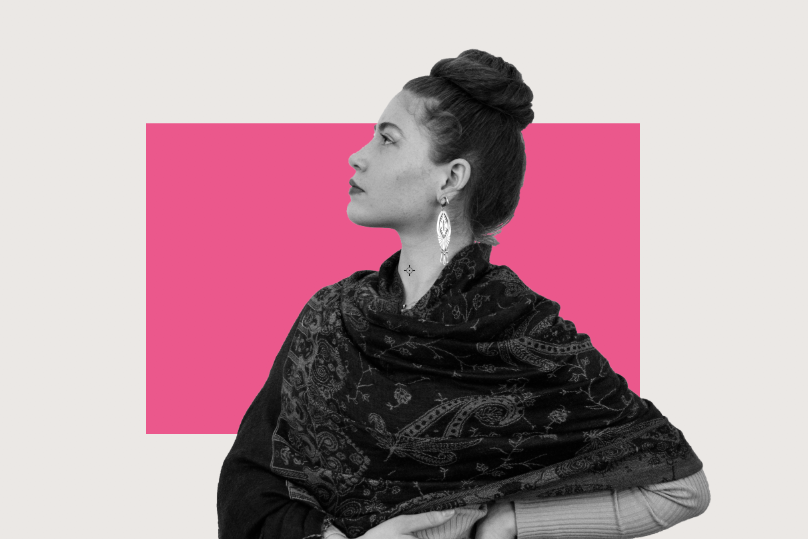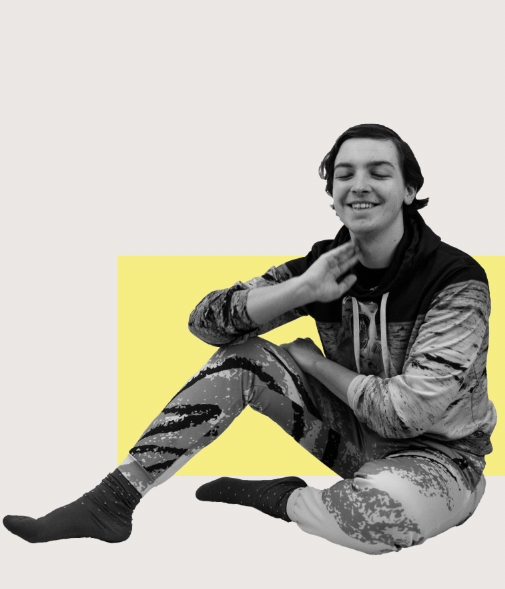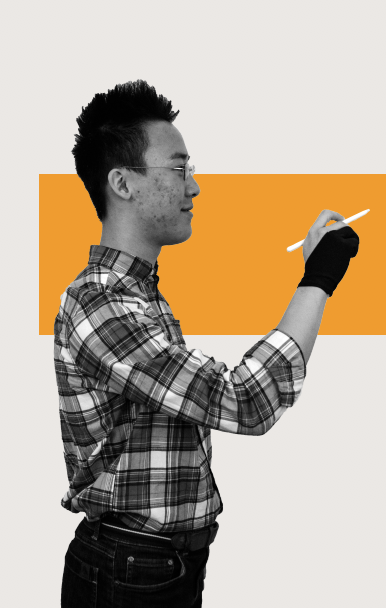Inspired by identity, students create art true to their core.

One night in February, Sofía Stutz rapped her song “Canyengue.” The title is a reference to a subgenre of tango popular in Argentina, where she emigrated from at age two. Stutz flaunted her vocal agility as she launched from her track’s relaxed, English opening into a tongue-twisting, rapid-fire Spanish verse.
“Canyengue, lo tengo, te quemo Soy chica de hierro Canyengue, lo tengo, te quemo con chispas de mi fuego”
Half an hour earlier, Stutz whispered to her twin sister, Carolina, that her nervousness had subsided. She wasn’t lying. The crowd in Willard B72, the location of that night’s open mic, couldn’t contain her fire.
She controlled the space, advancing toward the audience. She discreetly emphasized certain lyrics, revealing a connection to the song that only its writer could have. Her swaying arms and hips demonstrated an affinity for rhythm just as much as her lyrics.
Hip movement drives Canyengue, Stutz explained in an introduction to her piece. She likened it to a “female” swagger — credible analysis coming from someone with so much of it. Stutz explained the song sought to defy the view that intelligence and sensuality are mutually exclusive.
This reconciliation of seemingly distant concepts isn’t rare in Stutz’s work. Rather than music or theater, she’s studying philosophy, and though she’s part of the dance group Dale Duro, she’s largely absent from organizations mostassociated with student performers.
Stutz and other student artists that operate outside of Northwestern’s numerous a cappella groups, school orchestras and art collectives guide their work toward something uniquely personal.
As she discusses in her song, “Wordsmith,” language and wordplay fascinate Stutz. Rapping in Spanish also solidifies and legitimizes Stutz’s identity as an Argentinian immigrant, she says.
“I think Spanish is built for poetry. Things that sound really corny in English do not sound that corny in Spanish,” she says.
Stutz references the line “Me derrito internamente / Tu mente me embelesa” from her song, “Nostalgias.” This translates to “I melt internally / Your mind enchants me.”
RTVF third-year Charlie Rhoad also uses music as a reflection of himself, reframing music’s effect through the heavy use of sampling common in vaporwave, an electronic music genre.
“[Vaporwave] ironically takes a lot from ’80s TV ads and corporate marketing and Muzak and re-appropriates it into a way that shows, ‘Hey, this is the bright future we were promised but never got,’” he says.
The term itself comes from “vaporware,” a kind of software advertised but not yet released by developers. He connects this theme of failed potential to his music’s increasing focus on mental health. The song, “Why Am I Still Here,” from his album Exorcism As A Radical Form Of Self Care, features Rhoad asking the titular question.

Rhoad also makes music in numerous other genres, both electronic and more traditional, with less of a focus on sampling.
In a series of digital drawings depicting a frog in a robotic society, Bill Yen connects to his own immigrant identity. Like Stutz, who came to the U.S. at age two, Yen emigrated from Taiwan around the fourth grade.
“Frogs can’t always be in the water but also can’t only stay on land. They have to transition between two very distinct places, and that’s kind of how I felt when I first came to America,” says Yen, a first-year environmental engineering student.
Along with learning English, Yen continuously immersed himself in American culture, eager to try sports and foods more popular in America.
In a later drawing series, Yen illustrates a frog “just being himself.” He says it represents the end of his transition to America.
“Now, I don’t really care if people don’t think I’m necessarily just as American as them. I can just do what I want,” he says.

Stutz carries a similar boldness. In “G.A.W. (Grown Ass Woman),” she writes, “The power that I wield / In my hips, in my lips / In my brain, in my wit / You ain’t never gettin’ this / Like Bootylicious / Can you handle this? / Hm, I don’t know if you can.” Her stage name is Audax the Damsel – audax meaning “bold” in Latin.
“This is not the only time I’m able to be bold, but I think it’s a vehicle to express that even more and to amplify that and magnify that more,” she says.
To support her independence as a rapper, Stutz makes her cover art herself (though she sometimes uses art or photography from others), so she doesn’t have to wait on somebody else before releasing a track.
Rhoad also prizes independence. He creates each of his track’s instrumentals and records, writes and produces his songs. He also taught himself much of his guitar, bass guitar and audio software skills. This independence is a reaction to his childhood in Ohio.
“It totally does reflect a lot about me in that I grew up so claustrophobic in the Cincinnati suburbs where I came from,” he says.
Rhoad’s hometown is politically conservative, he explains. This manifests in smaller ways, like Rhoad’s parents’ emphasis on stability over adventure and in the “toxic masculinity” that discouraged him from opening up. As he’s become more vulnerable, his parents have been supportive, but having conversations about topics such as mental health still feel awkward.
Stutz, too, writes about transitioning to college, such as in “Seasons” and “The Kaplan Rap,” referencing the four-course Kaplan Humanities Scholars Program.
Yen explains that, in college, his frog motif represents him less as an immigrant, and more as a person navigating various interests and social groups. His outlook on art has changed as well.
“I’m starting to realize that drawing isn’t so much about translating what you have here,” he says, pointing to his eye. “It’s more transferring what you have here,” he says, pointing to his heart.